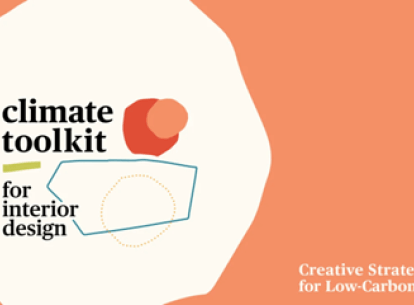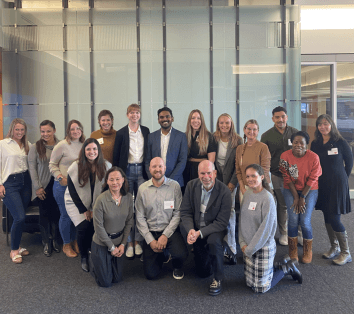Metropolis Magazine: 10 Strategies for Climate Control in Interior Design

Today, the building industry is responsible for 39% of the world’s carbon emissions. By 2050, analysts predict the interior design industry will be responsible for almost one-tenth of the world’s carbon emissions. (“Climate Toolkit for Interior Design,” Metropolis.com).
So, what does that mean for the future of design? And what can we do as designers to move the needle on a more sustainable, responsible future?
According to Metropolis Magazine – plenty. That potential inspired a three-month-long Hackathon, bringing together industry experts in design, construction, and manufacturing to continue the dialogue, exchange ideas, and identify practical shifts that create meaningful change. Jennifer Tart Thompson from Corgan’s Interior practice and Samantha Flores from Corgan’s Hugo team were tapped for the Austin event to brainstorm and define key strategies that would model best practices as we collectively join the fight against climate change.

Decarbonization is one of the most exciting and urgent creative challenges for interior designers today...It was wonderful to have leaders at firms like Corgan share insights that will help transform the industry and secure a better future for us all.
With the goal of outlining a set of realistic and holistic strategies to low-carbon interiors, the resulting Climate Toolkit for Interior Design provides useful guidelines that not only further the dialogue but also provide practical interventions — big and small — that serves as a living resource for more responsible design.

Samantha Flores and Jennifer Tart Thompson represented Corgan for the 2-day Hackathon in Austin.
Approximately 30 professionals spent two days in Austin to define key strategies outlining how the industry can improve and evolve.
Participants focused on 10 key areas to bring awareness and education within their firms, industries, and communities. Here are the 10 topics they covered:
1. Learn the Language of Carbon
Low-carbon design begins with understanding basic carbon concepts and tools.
2. Bring it Up with the Team
Initiate conversations about carbon with all stakeholders — clients, contractors, vendors, and end-users.
3. Uncover Creative Possibilities
Prioritizing reuse and recycling can result in beautiful, exciting, and emotionally resonant spaces.
4. Think Differently About Materials
Optimize the material palette and select products with appropriate durability for different applications.
5. Find the Hotspots
Identify the parts of your work with the biggest carbon footprints so that you can tackle those first.
6. Screen Products
Set up a general screening process for all materials and products so that decisions on individual projects become easier.
7. Sample Responsibility
Reducing the waste of the sampling process helps cut down the carbon footprints of both firms and manufacturers.
8. Partner Up to Reuse and Recycle
Find collaborators interested in sustainable construction and engage with them early.
9. Design for the Next Life
Find collaborators interested in sustainable construction and engage with them early.
10. Close Out Responsibly
Equip your current clients with enough information about their space so that future occupants and designers can reuse and renovate the space responsibly.
Learn more about the Climate Toolkit at Introduction to the Climate Toolkit - Metropolis (metropolismag.com)
From key decisions on projects including material selection and sustainable construction to shifting our perspective on how we practice and share information, architecture and interior






